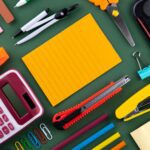Every child has a unique way of learning, processing information, and understanding the world around them. While some children excel through hands-on activities, others might thrive when they listen to stories or explore visual concepts. Understanding your child’s learning style can make a world of difference in how they absorb information and, ultimately, how successful they become in both academics and life.
Recognizing and supporting these individual learning styles is essential for unlocking your child’s full potential. Tools like the KidProsper app can help parents not only identify their child’s preferred learning style but also provide strategies to enhance their learning experience. Let’s explore the different learning styles and how you, as a parent, can support your child’s unique way of learning.
What Are Learning Styles?
Learning styles refer to the preferred way in which a child absorbs, processes, comprehends, and retains information. The idea that people learn differently is not new, but research into learning styles has shown that tailoring education to a child’s preferred mode of learning can significantly improve their understanding and retention of information.
Although there are various models for categorizing learning styles, one of the most widely accepted frameworks is the VARK model, which divides learners into four primary types:
- Visual Learners: Learn best through seeing.
- Auditory Learners: Learn best through hearing.
- Kinesthetic Learners: Learn best through hands-on, physical activities.
It’s important to note that most children do not fit neatly into one category. Instead, they may exhibit a combination of these learning styles, with one or two being more dominant. By identifying which style (or combination of styles) suits your child best, you can adapt your teaching approach to maximize their learning potential.
Visual Learners
Visual learners process information best when it is presented in a visual format. These children often excel when lessons involve diagrams, charts, pictures, and written instructions. They are likely to benefit from visual aids such as slideshows, graphs, videos, and even color-coded notes. Visual learners tend to be good at remembering images, understanding maps, and grasping the layout of a page quickly.
How to Support a Visual Learner
- Use Visual Aids: Incorporate charts, maps, flashcards, and infographics into their learning process. Visual learners often find it easier to remember information that is presented in a clear, organized visual format.
- Color Coding: Encourage your child to color-code their notes or assignments. For example, they can use different colors for different subjects or concepts. This visual separation helps them organize and recall information better.
- Drawing and Diagramming: Allow your child to draw or create diagrams when learning new concepts. For example, when studying science, they can sketch the parts of a plant or create a flowchart to understand ecosystems.
- Visualization Techniques: Teach your child to visualize information in their head. For example, if they are learning a story, ask them to imagine the scenes and characters as vividly as possible. This can help them retain and recall the information more effectively.
Auditory Learners
Auditory learners prefer learning through listening. They tend to excel when they hear information and may struggle with visual or reading-heavy learning formats. These children enjoy listening to stories, engaging in discussions, and are often good at remembering things they hear. Auditory learners thrive in environments where they can listen to lectures, participate in discussions, or use sound-based memory aids.
How to Support an Auditory Learner
- Read Aloud: When reading with your child, try reading the material aloud, or let your child read aloud to themselves. Hearing the words can help auditory learners process and retain information better.
- Use Audiobooks and Podcasts: Incorporate audiobooks, podcasts, and educational videos into your child’s learning routine. Many auditory learners find it easier to retain information when they hear it rather than read it.
- Discussion-Based Learning: Engage your child in conversations about what they’re learning. Ask them to explain concepts in their own words or participate in group discussions. Verbal processing helps auditory learners clarify and retain information.
- Music and Rhythm: Some auditory learners benefit from associating information with music or rhythm. Encourage your child to make up songs, rhymes, or chants that help them memorize facts or concepts.
- Record Lessons: If your child struggles to take notes during a lesson, consider recording the lesson or key points and allowing them to listen to it later. Hearing the material again will help reinforce their understanding.
Kinesthetic Learners
Kinesthetic learners process information through touch, movement, and hands-on experiences. They often excel in subjects like physical education, arts and crafts, or lab-based science experiments. Kinesthetic learners tend to struggle with passive learning formats like lectures or reading-heavy assignments but shine when given the chance to physically engage with the material.
How to Support a Kinesthetic Learner
- Hands-On Activities: Encourage your child to learn through physical activities. Whether it’s building a model for a science project, conducting experiments, or creating art, kinesthetic learners benefit from actively engaging with the material.
- Break Learning Into Chunks: Kinesthetic learners often have difficulty sitting still for extended periods. Break their study sessions into smaller chunks with frequent breaks where they can move around.
- Interactive Learning Tools: Consider using interactive learning tools, such as educational toys, apps, or games that require physical manipulation. This type of engagement helps kinesthetic learners better understand and retain information.
- Physical Movement While Learning: Encourage activities like pacing while studying or using gestures to represent concepts. This physical movement helps kinesthetic learners focus and internalize what they’re learning.
- Field Trips and Outdoor Learning: Whenever possible, provide opportunities for your child to learn outside the traditional classroom. Field trips, nature walks, or museum visits are great ways to bring learning to life for kinesthetic learners.
Combining Learning Styles: The Multi-Sensory Approach
It’s important to recognize that many children do not fall strictly into one learning style. They might have a dominant style but also benefit from elements of other styles. For example, a child might primarily be a kinesthetic learner but also find visual aids useful in understanding complex concepts.
Incorporating multiple learning styles, also known as a multi-sensory approach, can help cater to all aspects of your child’s learning preferences. This approach ensures that your child can absorb information in a variety of ways, making learning more effective and engaging.
For instance, if your child is learning about history, you could combine different learning styles by:
- Showing a documentary (visual and auditory learning),
- Asking them to write a summary of the event (reading/writing learning),
- Organizing a hands-on activity, such as building a model of a historical site (kinesthetic learning).
This balanced approach can help your child engage with the material more deeply, as it activates different parts of the brain and makes learning more memorable.
How KidProsper Can Help You Identify and Support Your Child’s Learning Style
As a parent, understanding your child’s learning style can feel overwhelming at times. That’s where tools like the KidProsper app come in. KidProsper is designed to help parents identify their child’s preferred learning style and provide personalized recommendations on how to support their education.
With KidProsper, you can:
- Take Personalized Assessments: The app offers scientifically-backed assessments that can help you determine whether your child is a visual, auditory, reading/writing, or kinesthetic learner. These assessments give you insights into how your child processes information best.
- Receive Tailored Recommendations: Based on your child’s learning style, KidProsper provides personalized strategies for studying, playing, and engaging with information. Whether your child is a kinesthetic learner who needs more hands-on activities or a visual learner who benefits from color-coded notes, the app offers actionable tips.
- Access Learning Resources: KidProsper provides access to a wealth of educational resources, including interactive games, reading materials, videos, and activity suggestions. These resources are aligned with your child’s learning style, making it easier for them to engage with new concepts.
- Monitor Progress: KidProsper allows you to track your child’s progress and see how their learning style develops over time. This feature helps parents make



